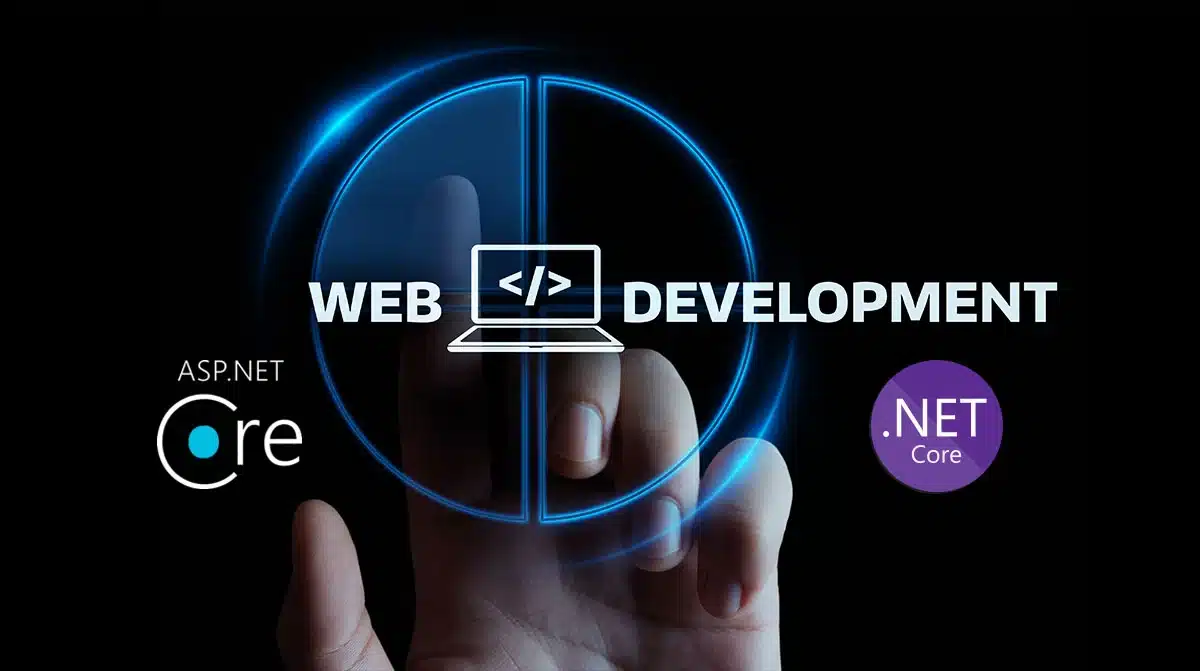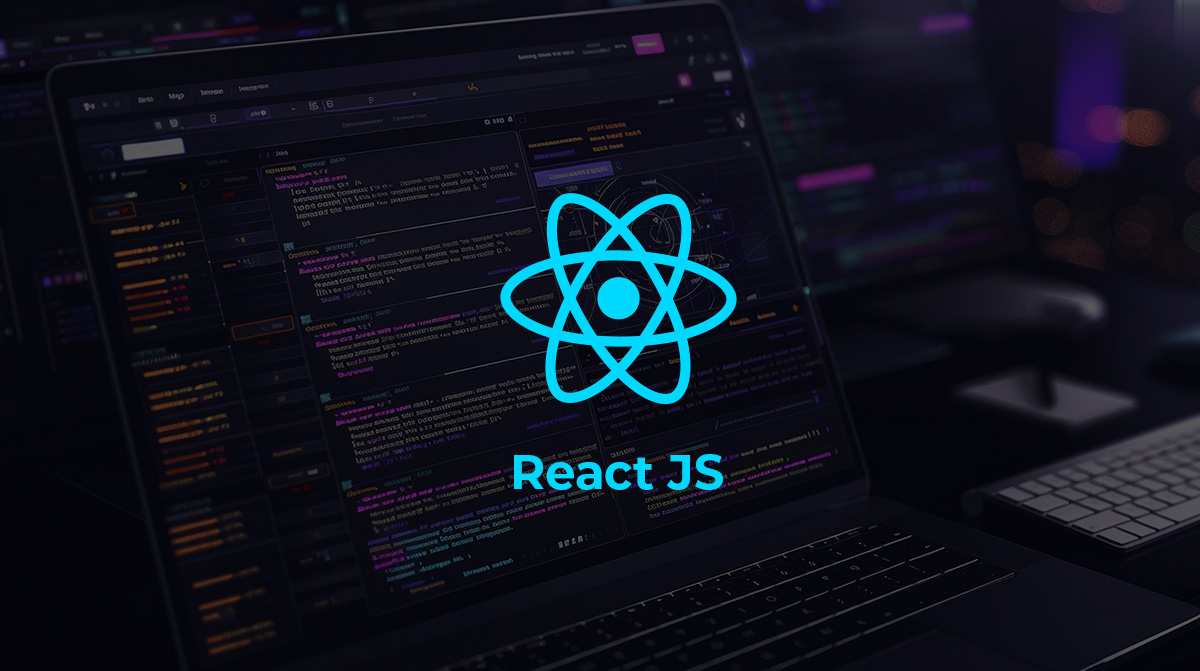You know the feeling when a new software update rolls out—excitement mixed with apprehension. Will it live up to expectations? Will it break existing code? Or will it introduce powerful new capabilities that make development faster, smoother, and more efficient?
Well, Microsoft has just dropped the first preview of .NET 10, and from what we can see, it’s shaping up to be a game-changer for developers. Whether you’re building enterprise applications, high-performance web APIs, or AI-driven workloads, this release is designed to bring noticeable improvements across the board.
With .NET 10 as the next long-term support (LTS) release, developers can expect significant enhancements in runtime performance, ASP.NET development, API design, and overall developer productivity. The introduction of smarter APIs, optimizations for Just-In-Time (JIT) compilation, Blazor improvements, and enhanced cloud-native capabilities make this update worth paying attention to—especially if you’re currently working with .NET 8 or considering an upgrade from an older version.
So, what’s new in .NET 10? Why does it matter? And more importantly, how can you prepare for the transition? Let’s break it all down.
Faster and More Efficient Runtime: A JIT Revolution
Performance is always a priority, and .NET 10 doesn’t disappoint. Microsoft has overhauled the Just-In-Time (JIT) compiler, making it more efficient, especially on ARM64 and x64 architectures. Why does this matter? Faster execution, lower memory usage, and overall snappier applications.
A standout improvement involves reducing abstraction overhead in array operations. Here’s a practical example: summing an array using a static array is four times faster than using an interface-managed array. Why? Because interfaces add multiple operations, which slow things down. .NET 10 introduces devirtualization for array interfaces, allowing the JIT compiler to optimize code without unnecessary overhead.
If you’re handling large datasets or performance-critical applications, this means significant
speed gains without sacrificing clean coding practices.
Future-Proofing with Next-Gen Processor Support
Tech never stands still, nor does Microsoft. .NET 10, designed with next-generation silicon in mind, explicitly supporting upcoming x64 instructions like AVX 10.2. These enhancements are particularly beneficial for AI, cryptography, and WebAssembly workloads.
While the silicon that fully supports these features isn’t out yet, having the framework ready means developers can seamlessly adopt cutting-edge hardware when it becomes available. With a three-year support window, this forward-thinking ensures longevity and stability for your applications.
AI and ML Workloads: Enhanced Performance for Data-Driven Applications
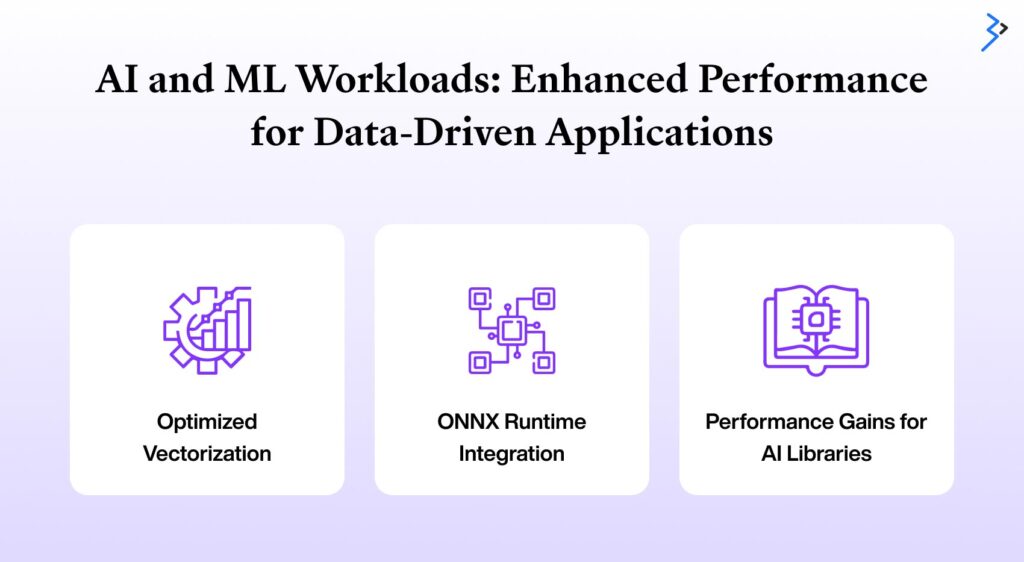
With the growing adoption of AI and machine learning, .NET 10 introduces optimizations that enhance the performance of AI workloads.
- Optimized Vectorization: .NET 10 leverages improved SIMD (Single Instruction, Multiple Data) support, speeding up matrix operations and deep learning computations.
- ONNX Runtime Integration: Developers working on AI-based applications can benefit from tighter integration with ONNX (Open Neural Network Exchange), which will make ML model execution more seamless.
- Performance Gains for AI Libraries: Popular. NET-based AI libraries such as ML.NET are expected to run more efficiently, reducing inference times for real-time applications.
Security Enhancements: Stronger Authentication and Encryption

Security is a key concern for modern applications, and .NET 10 addresses this with significant improvements:
- Better TLS Handling: Enhanced support for TLS 1.3 ensures stronger encryption for secure communication.
- Improved Authentication: Identity handling in ASP.NET Core has been refined, reducing common vulnerabilities in authentication flows.
- Enhanced Cryptographic APIs: .NET 10 introduces new cryptographic enhancements, making it easier to work with secure data.
Read More – Introduction to .NET MAUI: A Comprehensive Beginner’s Guide
Cloud-Native Development: Optimizations for Kubernetes and Serverless
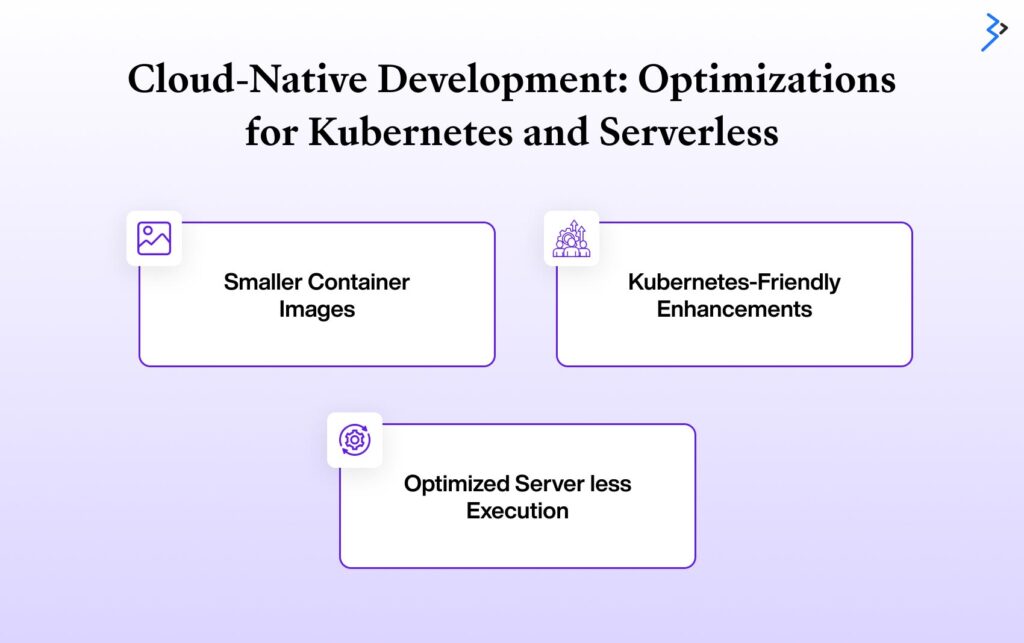
With enterprises moving towards cloud-native architectures, .NET 10 makes deployment and management easier:
- Smaller Container Images: Reduced footprint for .NET 10-based containerized applications, improving startup times.
- Kubernetes-Friendly Enhancements: Better compatibility with Kubernetes-native tools, making orchestration smoother.
- Optimized Serverless Execution: Reduced cold start times for Azure Functions and other serverless workloads.

A New Era for ASP.NET Core and Blazor
.NET 10 isn’t just about speeding things up; it’s about smoother development. ASP.NET Core has significantly upgraded, particularly for API development and Blazor-based applications.
Blazor Gets a Boost
Blazor is evolving into a more robust framework for modern web applications. A key update in .NET 10 treats Blazor scripts as static assets, improving content delivery network (CDN) support and reducing the load on web servers. This translates into better scalability for high-traffic applications.
Additionally, while we’re still awaiting further updates for SignalR and minimal APIs in future previews, the foundation has been laid for more efficient real-time and microservice architectures.
More Brilliant API Documentation with OpenAPI 3.1.1
If you’re developing APIs, you’ll love this. .NET 10 has upgraded OpenAPI support to version 3.1.1, aligning with the latest JSON Schema specifications. This brings better compatibility with third-party tools and simplifies API documentation.
A significant improvement is the ability to generate OpenAPI docs in YAML format instead of just JSON. Why is this a big deal? YAML is easier to read and takes up less space, making documentation more human-friendly and efficient.
Another key enhancement is that you can now use JsonNode instead of OpenAPI-specific classes like OpenApiInteger and OpenApiString. This simplifies code and makes API documentation less of a headache.
Developer Productivity: Small Changes, Big Wins
One of the best things about .NET 10 is making everyday development tasks more
manageable. Microsoft has introduced subtle but impactful features that reduce coding complexity and improve efficiency.
Numeric String Sorting Finally Fixed
Have you ever tried sorting strings with numbers and ended up with an incorrect order? .NET 10 introduces numericStringComparer, which correctly sorts items like “Airbus A320,” “Airbus A319,” and “Airbus A321.” Previously, this required multiple workarounds, but now it’s a simple one-liner.
Improved ZIP Archive Support
With enhanced ZIP archive support, file handling also benefits, making it easier to manage compressed files without relying on third-party libraries.
Read More – The Advantages of Using .NET Core for Software Development
Preparing for .NET 10: What Should You Do?
The highly anticipated release of .NET 10 is just around the corner and now is the perfect time to start preparing for its arrival. As a Long-Term Support (LTS) release, .NET 10 will provide a stable and reliable foundation for enterprise applications, making it a prime candidate for long-term adoption.
But what does this mean for developers and organizations currently using previous versions of .NET? Taking proactive steps now will ensure a smooth transition and help you maximize the benefits of the latest enhancements.
How to Get Ahead of .NET 10
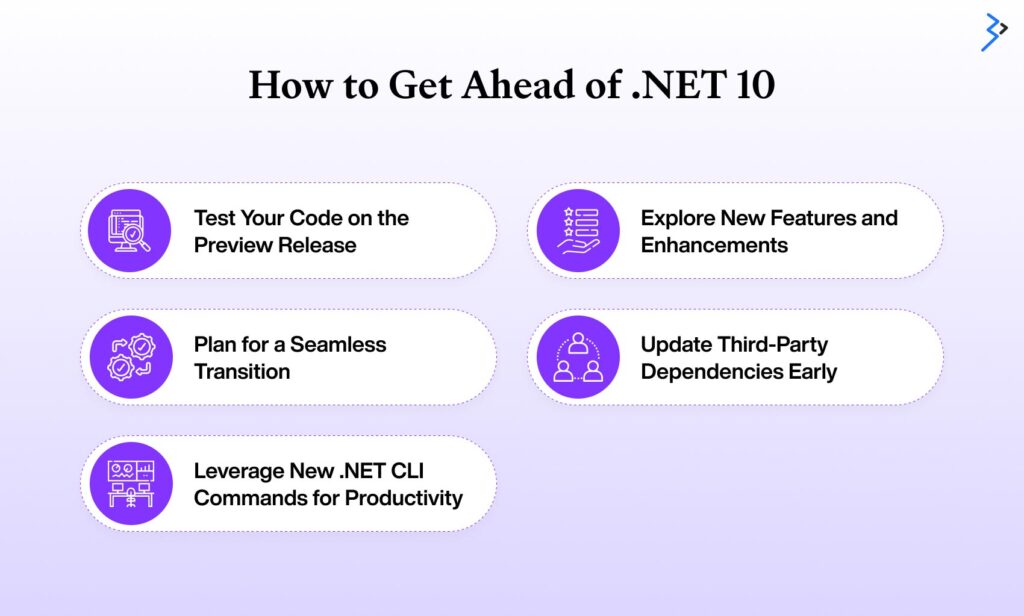
- Test Your Code on the Preview Release
Microsoft provides early access to .NET 10 preview builds, allowing developers to test their existing applications for compatibility and performance improvements. Installing the preview version in a controlled environment will help you identify potential issues before the official release.
- Check for breaking changes in APIs and libraries.
- Benchmark performance improvements in key areas like JIT compilation and memory management.
- Validate third-party dependencies to ensure compatibility.
- Explore New Features and Enhancements
Each .NET version brings performance optimizations, language improvements, and new capabilities—and .NET 10 is no exception. Understanding these updates can help you decide which features to leverage in your projects.
Some key areas to explore:
- JIT and AOT Enhancements: Expect faster execution times and more efficient memory usage.
- Blazor Improvements: Enhanced interactivity and component updates for modern web applications.
- Smarter APIs: Improved developer ergonomics and streamlined workflows.
- Security Enhancements: Strengthened authentication and cryptography measures.
You can strategically plan for adoption in your projects by analyzing these features early.
- Plan for a Seamless Transition
.NET 10’s LTS designation means long-term stability and support, making it a strong choice for production workloads. To ensure a seamless transition:
- Audit your existing .NET applications to identify dependencies that may require updates
- Evaluate CI/CD pipelines to align with .NET 10 deployment best practices
- Train your development team on new language features and best practices introduced in .NET 10
- Update Third-Party Dependencies Early
Many third-party libraries may not immediately support .NET 10 upon release. Stay ahead by:
- Checking for compatibility updates from key libraries
- Exploring alternative libraries if specific dependencies are deprecated
- Running automated dependency scanning tools to flag potential issues
- Leverage New .NET CLI Commands for Productivity
.NET 10 enhances the command-line experience for developers with improved CLI functionality:
- Faster Build and Restore: Enhancements to dotnet build and dotnet restore make builds more efficient.
- Improved Debugging: More detailed error messages and enhanced debugging tools streamline troubleshooting.
Read More – Top 10 Reasons to Migrate from .NET Framework to .NET Core
Final Thoughts
.NET 10 isn’t just another incremental update—it’s a significant step forward, designed to enhance performance, developer productivity, and scalability. Whether you’re working on enterprise applications, microservices, web APIs, or AI-driven solutions, these updates will make a tangible impact.
By testing early, exploring new features, and planning ahead, you can ensure a smooth and optimized transition to .NET 10.
So, are you ready to embrace the future of .NET development? With its powerful enhancements and LTS backing, .NET 10 is set to redefine how we build and scale applications.
Related Articles
-
Modern Web Development with .NET Core and ASP.NET Core
Staying ahead of the curve is essential in the fast-paced web and app development world. Whether you’re a seasoned developer or just starting, mastering .NET Core and ASP.NET Core can
-
How ReactJS can fuel your business for success?
In the constantly evolving world of new features, libraries, tools, etc. popping around to give users a wide range of options to choose from and enhance their projects and business
-
Comprehensive Guide to Web Application Development
A web application development company is best for businesses, who need assistance for building a web app to increase its online visibility. What is a web application? A web application


